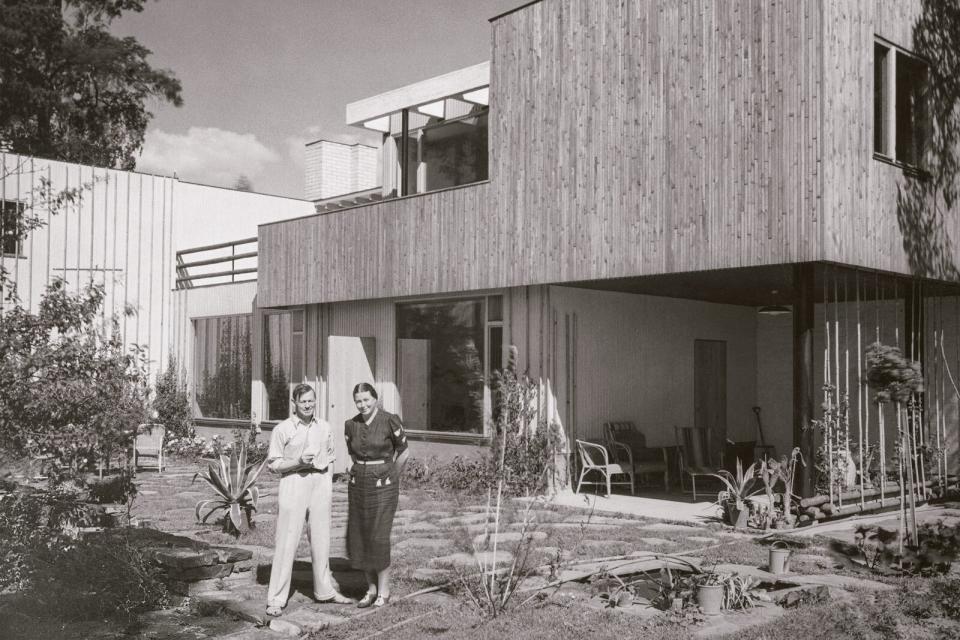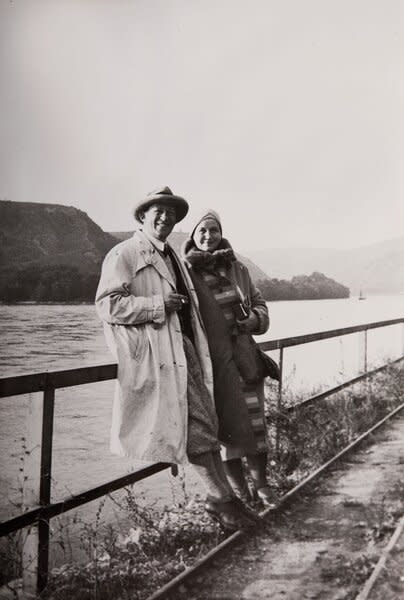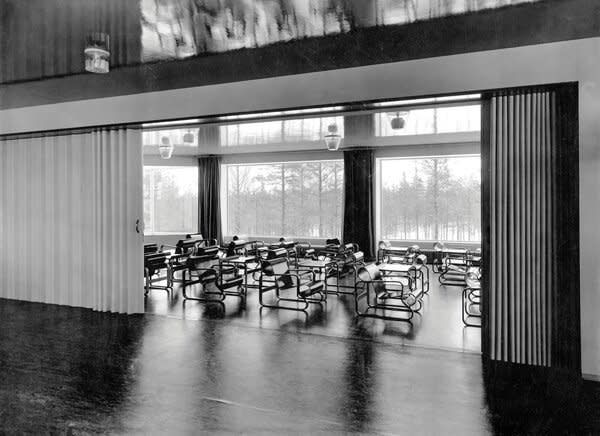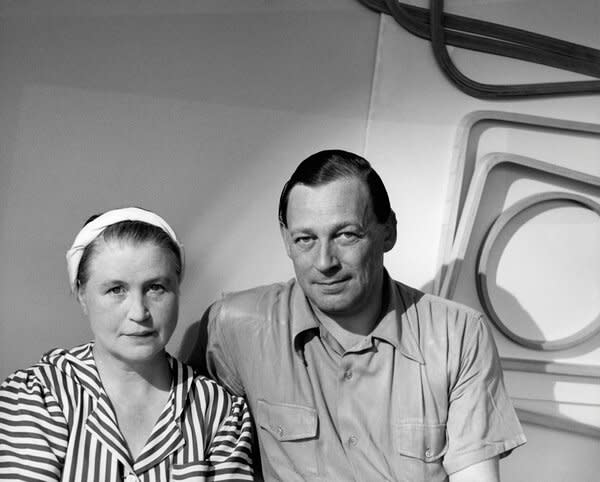The Complicated Love Story of Modernist Design Duo Aino and Alvar Aalto
- Oops!Something went wrong.Please try again later.
- Oops!Something went wrong.Please try again later.
A new book from the grandson of the celebrated Finnish architects draws on never-before-published letters and photographs to tell the tale of the couple’s shared legacy.

The late, great Finnish architect Alvar Aalto is known for a lot of things, including (but not limited to) his undulating glass Savoy vase, timeless wooden Paimio chairs, and a slew of modernist buildings he crafted in the International style. What’s lesser known, though, is that much of that work was crafted alongside or with the help of his wife, Aino Aalto, who was a talented architect and designer in her own right.
A new Phaidon monograph is attempting to change that, though. In Aino + Alvar Aalto: A Life Together, the pair’s grandson, Heikki Aalto-Alanen, uses private correspondence discovered in an old suitcase in the attic of the couple’s Riihitie House in Helsinki to piece their history together. The visual biography, Aalto-Alanen writes in the intro, is a look at the couple’s love story through the lens of their work.
Mostly told in their own words, Aino + Alvar Aalto is also an intimate look inside a partnership that was both romantic and commercial. Though Aino died in 1949 after a bout with breast cancer and Alvar would go on to remarry and work independently until his death in 1976, the 25 years the couple were together were some of their most productive, both personally and professionally. It’s when they helped launch Finnish furniture brand Artek and when they became renowned figures in the international art and architecture community, befriending everyone from Frank Lloyd Wright to Le Corbusier to Paul Klee.
While Alvar was, Aalto-Alanen writes, "restless, exuberant, and unpredictable," Aino was "intense, diligent, and restrained," making the pair a perfectly matched set. Though they were great professional collaborators, they were also romantically compatible. After all, as Aalto-Alanen writes in the book: "A shared vision cannot stand in the way of love, let alone replace it—rather the two can complement each other in a noble, beautiful way."
Aino + Alvar Aalto uses works like the Viipuri Library and the Paimio Sanatorium to illustrate how the pair worked together, including light studies, illustrations of undulating ceilings, and Aino’s textile sketches. Though Alvar receives much of the credit for these buildings even now, the book stresses that they were a collective achievement, even if Aino ended up staying home with the pair’s children (who they charmingly refer to as "the urchins" in letters) while Alvar got to glad-hand his design peers at European architecture congresses.
It was at those conferences that Alvar became friends with architectural luminaries like Bauhaus founder Walter Gropius, architectural historian Sigfried Giedion, and Hungarian artist and photographer László Moholy-Nagy, who the book says Aino was quite taken with. (The feeling seems to have been mutual.) Though the Aaltos would mix, mingle, and vacation with all of the above, Aino + Alvar Aalto suggests that Aino started to feel excluded when she was left at home during Alvar’s business trips. He was off making professional friends and getting acclaim, while she was left home to tend the business and keep the kids in check, even though her work was just as important.
See the full story on Dwell.com: The Complicated Love Story of Modernist Design Duo Aino and Alvar Aalto




